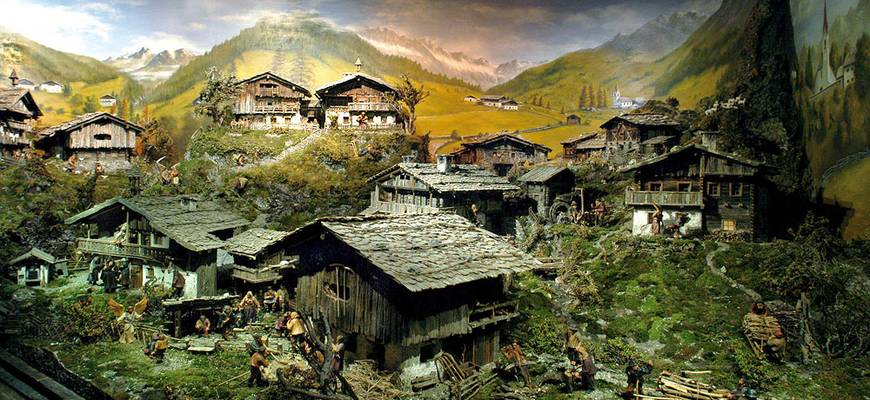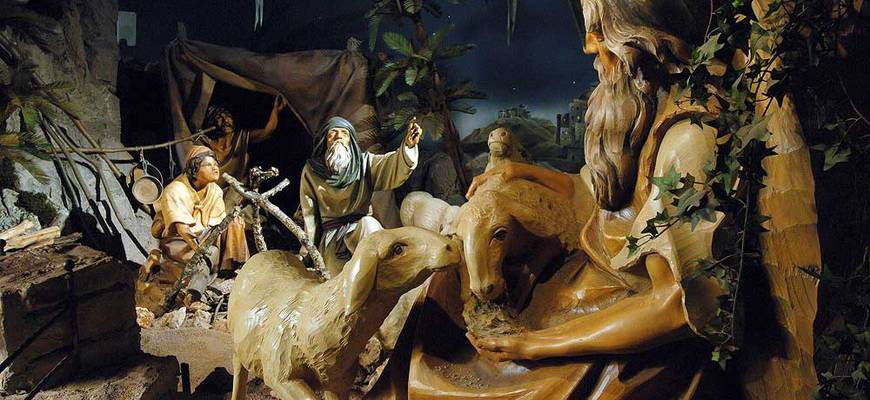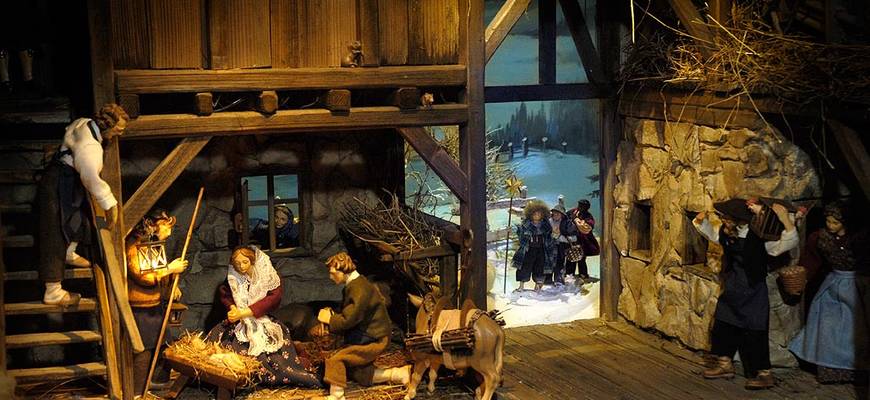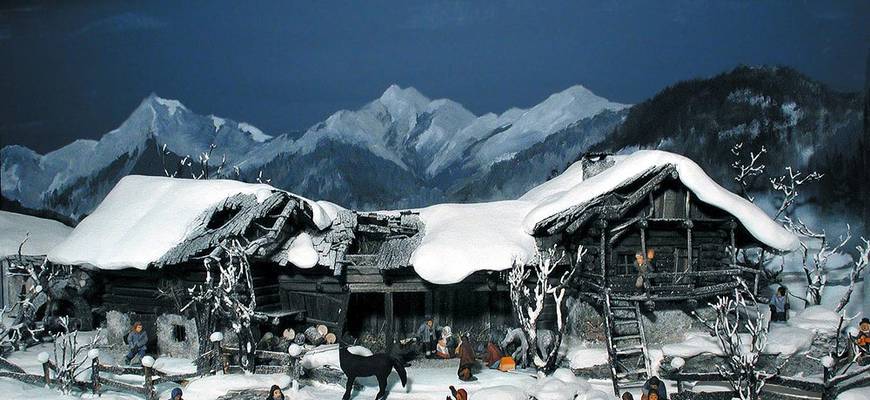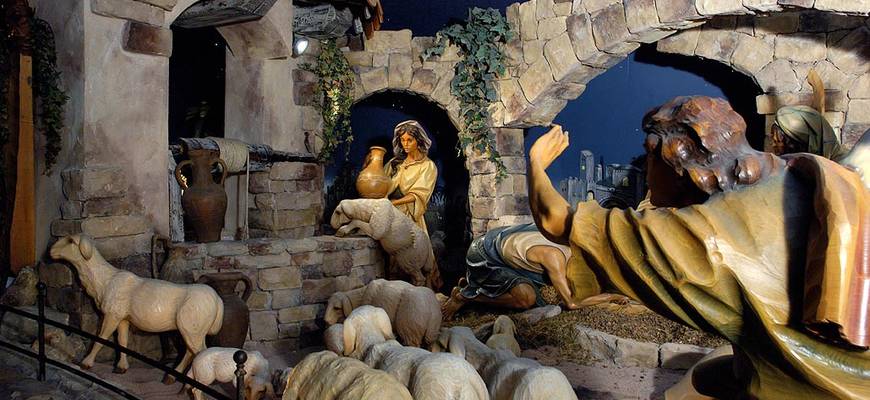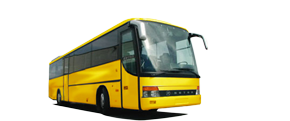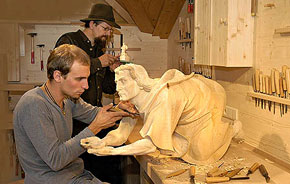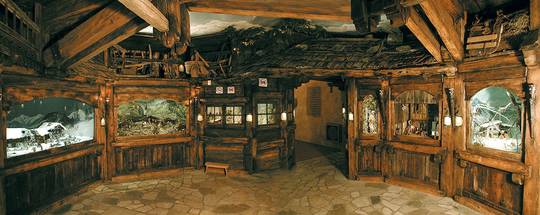Weißenbachstr. 17,
39030 Luttach-Ahrntal, Italy
Tel:+ 39 0474/671 682
Mobile phone: +39 340-4592300
E-Mail: info@krippenmuseum.com
Business hours:
Mon to Sat: 9 am to 12 am
and 2 pm to 6 pm
Sunday: 2 pm to 5 pm
Open all year
Prices:
€ 7,00 per person
Family card € 15,00
The museum of the nativity
The museum of the nativity in Luttach was opened in December 2000 after four years of building and is constantly changing its exhibits. The concept originated from the genial idea of Paul Gartner.
Since its opening constant efforts have been made to keep the museum attractive and authentic and it has been extended to become a special source of Christian belief, strength and hope. Numerous nativity-scenes have been acquired, some also borrowed. Existing nativity-scenes like the big oriental wooden one are constantly being added to by Jonas Pitscheider and Lukas Troi.
Thanks to the tireless devotion of passionate nativity-scenes and background designers, like Olaf Flatscher, Paul Gartner and Eduard Untergasser, just to name some, it was possible to situate many original, old, wooden nativity-scenes here. The love of detail is only visible at closer viewing, if one immerses oneself in the individual shepherd scenes which consist of hundreds of little wooden figures.
South-Tyrolean, Austrian and German artists have worked together to create the nativity-scenes and the perfect background scenery. Especially the local painter Albert Abfalterer should be mentioned, whose four meter long watercolour background sceneries are probably his greatest works to date. They grace the depiction of seasonal Tyrolean customs and traditions in the Gothic Stube, as does the big traditional nativity-scene from Ahrntal, with miniature buildings built by Alfons Hofer from Prettau in over twenty years of patient winter work.
The most impressive hand carved work is the 80 m² large oriental nativity-scene with life-size wooden figures under a romantic star studded sky. This traditional work of craftsmanship is emphasized by illumination and sound.
To continue to provide an appropriate background and setting and fitting scenery paintings, a new 80 m² room, the GLORIOLE has been established and will be open to the public on the first Sunday in Advent 2009. In the Gloriole, given its name due to the ceiling decoration, many original, old nativity-scenes are exhibited, well worth a visit even for visitors who already know the Maranatha. The unique „Jahreskrippe“ from the „Krippenverein Steinhaus,“ was built by many diligent villagers, run by Erich Treyer „Wiesen“. In various showcases scenes from the life of Jesus are portrayed in an artistic and pensive way. A special oriental nativity-scene has been lent by family Ploner from Pustertal. One can also admire a very rare Christmas-pyramid from the Erzgebirge and nativity-scenes of great masters like Umberto Palazzo or Guido Raccani.
In the corridor between the ground floor and the basement a collection of nativity-scenes from Sicily are exhibited and a „Jahreskrippe“ portraying the story of Jesus from the revelation to the resurrection. The artist Angela Tripi formed and painted the figures. The background for the „Jahreskrippe“was painted by Eduard Untergasser and Alfred Fleckenstein. The exhibition is enriched by nativity-scenes out of glass, ceramic, metal and porcelain. The nativity-scenes from Claudio Mattei from Ponte San Pietro and the wood carver Stefan Lanthaler from Fulpmes/Tyrol are also noteworthy.
The nativity-scene figures originate from different European countries and have been collected with passion over many years. The art professor Bruno Lipp from Munich has contributed to the design of the museum with his works in the modern art gallery, along with the Italian Roberto Cipollone, the South-Tyrolean artists Friedrich Sebastian Feicher, Leo Demetz, Olaf Flatscher or Sr. Caritas Müller from Switzerland. The brightly lit art gallery stands in contrast to the exhibition room of the traditional Tyrolean nativity-scenes. In a reconstruction of a Tyrolean barn, built from the old wood taken from the „Holzlechnhof" in Prettau, alpine nativity-scenes are exhibited.
The Gothic Stube is a place of tranquillity in the museum. Its complex carved barrel vault was built after an archetype of the 16th century. Cultural and customary events such as Advent-singing and folks music evenings take place here. Nativity-scene courses or carving demonstrations can be organised on request.
The guided tour through the museum is lead by the visionary Paul Gartner, assisted by the artistic supporter, the musician, composer, text writer and guide Hubert Leimegger.
Should visitors have to wait, they can watch a film about the museum in the panelled „Zirbelstube“on the right hand side of the main entrance

